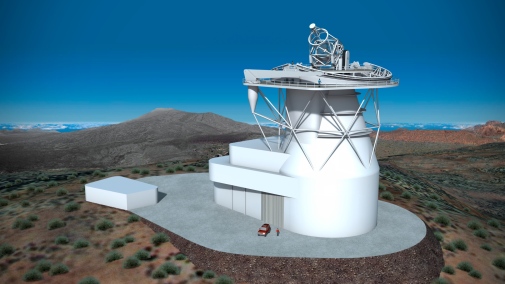Website:
Coordination:
The EST Preparatory Phase (PRE-EST) coordinating institute is Instituto de Astrofísica de Canarias (IAC), being Manuel Collados Vera the PI.
The Portuguese contribution to the project will focus on developing the Integral Field Spectropolarimeter based on Image Slicer. Ricardo Gafeira is Co-PI of the instrument in partnership with the IAC.
Scope:
Funding:
The EST project has become a reality in the first place thanks to approved EU funds obtained through the FP7 and H2020 framework programmes. EST partners have contributed with their own resources to the different EST-related activities, some of them contributing with an annual quota to the PRE-EST. Moreover, the European Regional Development Fund (ERDF) also contributes to the PRE-EST and national funding agencies.
The European Solar Telescope (EST) is a project aimed at designing, constructing, and operating the largest solar telescope ever built in Europe. With a primary 4-metre mirror and a chosen location at the Observatorios de Canarias (OOCC), it will triple the capacity of today’s largest solar telescopes operating in Europe. In addition, EST will detect weak signals that are now buried in the noise, triggering a leap forward in our understanding of the Sun.
EST is an initiative promoted by the European Association for Solar Telescopes (EAST). This organisation brings together 24 institutions spread across 18 European countries, aiming to ensure access of European solar astronomers to world-class high-resolution, ground-based observing facilities. EST formally entered the active project list of the European Strategy Forum on Research Infrastructures (ESFRI) roadmap in March 2016 as the flagship project for the European solar physics community.
Building EST will guarantee the European solar physics community access to an essential tool for ground-based solar research that will bring in scientific benefits in quantity as well as of the highest quality. EST fills an important gap, as such large-scale telescopes for solar physics do not exist in Europe. It is a crucial step in reinforcing European and national research in this field. Moreover, EST will give the European and national industry, which are very well equipped in view of this type of project, a unique opportunity to capitalize on their expertise.

